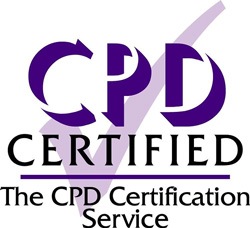Including disability in your EDI Strategy

There are many benefits to having an Equity (formerly Equality) Development and Inclusion (EDI) strategy. Not only does it enable you to create an inclusive, fairer working environment, it builds the foundations for a workplace culture that will allow employees to feel valued, motivated, and able to reach their full potential.
It also protects, prevents, and steers businesses away from legal issues such as bullying, harassment and discrimination, helping them to adhere to the Equality Act 2010. Furthermore, it improves innovation, creativity and problem solving. But the benefits don’t end there! In fact, there are many economic advantages to having an EDI strategy in place too. It has been proven that companies that have EDI strategies tend to outperform their competitors financially, with research showing that these organisations are 120% more likely to achieve their financial goals.
But like any kind of strategy- simply having one doesn’t mean the work is over. You’ll only truly see benefits if the strategy is properly executed, which many companies appear to be struggling with. This was shown in the CIPD’s Inclusion at work 2022 report where 25% of respondents stated that EDI activities were mostly “reactive to issues or reporting requirement changes”. The study also found that only 38% of employers collected equal opportunities monitoring data from their employees, new recruits, and job applicants.
In addition to these failings, there has also been a vast amount of research to show that disability is being overlooked across a huge majority of EDI strategies. In fact a report from the Return On Disability Group revealed that 90% of companies claim to prioritize diversity, yet only 4% consider disability in those initiatives. Instead, there is a greater focus on race, religion, gender, and sexuality, with disability often an afterthought or an oversight. The irony being that anybody from other protected characteristic groups can also have, or develop a disability at any time!
Of course, it goes without saying that by definition, an EDI strategy should include effective steps towards a workplace that is for all protected characteristics- especially when you consider that people with disabilities include 26% of the population.
So, what’s required?
Improving disability inclusion in EDI strategies requires a systemic approach that is holistic, company-wide, and led from the top down. This can be applied to all organisations regardless of size, or budgetary restraints.
To create a company culture that is inclusive and addresses disability equally, areas such as recruitment processes, management and leadership should be considered, as well as aspects such as the working environment and reasonable adjustments.
Most importantly steps towards the development of an inclusive culture should be advanced with clear goals, objectives, and a strategy to measure progress.
Of course, one of the best ways to do this, is by creating training opportunities for all staff- most importantly leaders and management, across all hierarchies and all teams. It’s also advisable to consider disability awareness as continued learning and not simply feeling that one session means a staff member has ticked the training box.
A safe space for feedback should also be developed that allows staff to comfortably ask questions, assess progress, and offer ideas and suggestions around improving inclusivity. Staff should also be reminded that incorporating disability into the strategy isn’t about compliance but creating a space that promotes value and respect fostering a spectrum of talents and perspectives. Rather than people fighting their disabilities or keeping them quiet because they are afraid of the consequences, allow them to bring their best selves to work.
As the company learns, understands and becomes more aware of disability, it’s accessibility and inclusive commitments will become a part of the brand ethos, and you’ll attract staff and customers with disabilities- whilst those with hidden disabilities will also feel more at ease talking about their needs.
Chris Jay, Managing Director, Bascule Disability Training
For consultation on developing an inclusive strategy, or to embark on a training journey contact- info@bascule.com




